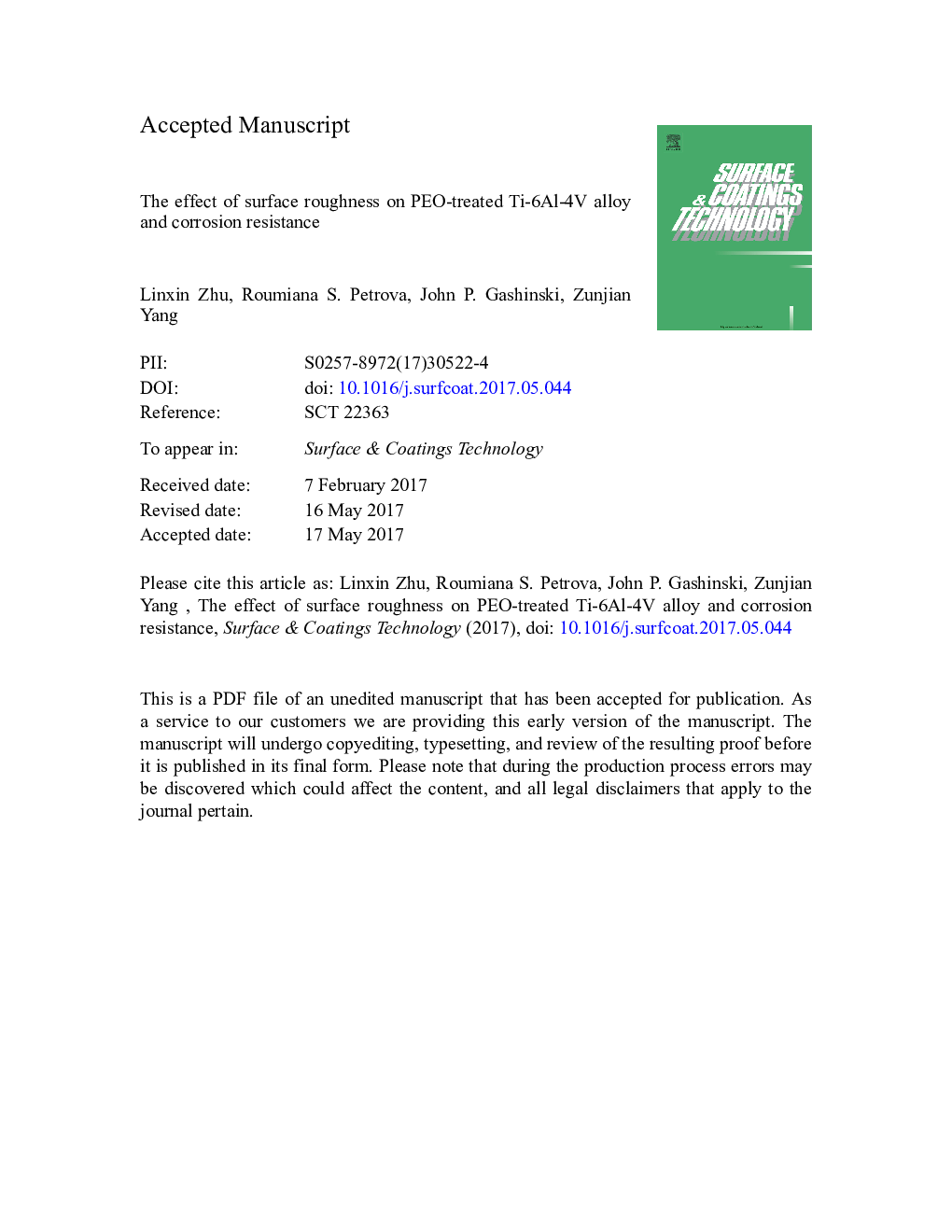| Article ID | Journal | Published Year | Pages | File Type |
|---|---|---|---|---|
| 5464787 | Surface and Coatings Technology | 2017 | 45 Pages |
Abstract
In this paper, Ti-6Al-4V alloy samples with three different surface finishes are treated by Plasma Electrolytic Oxidation (PEO) process to investigate the effect of surface roughness on the prepared samples. The low surface roughness reduces the ignition voltage due to a lower Gibbs free energy during heterogeneous nucleation. The surface morphology of the samples are analyzed via scanning electron microscopy (SEM) showing surface damage by cavitation, attributed to the rough finishing on the Ti-6Al-4V surface. Besides the traditional porous structure, a non-porous oxide surface is achieved on the polished Ti-6Al-4V surface and the structure of the oxide layers is characterized by microdiffraction at Argonne National Laboratory. Potentiodynamic polarization and electrochemical impedance spectroscopy (EIS) are conducted in Hank's solution, reveals that the cavitation reduces the corrosion potential and passivation behavior of the samples. EIS analysis results are also simulated to identify different oxide layer structures, which is supported by the SEM observations.
Related Topics
Physical Sciences and Engineering
Materials Science
Nanotechnology
Authors
Linxin Zhu, Roumiana S. Petrova, John P. Gashinski, Zunjian Yang,
